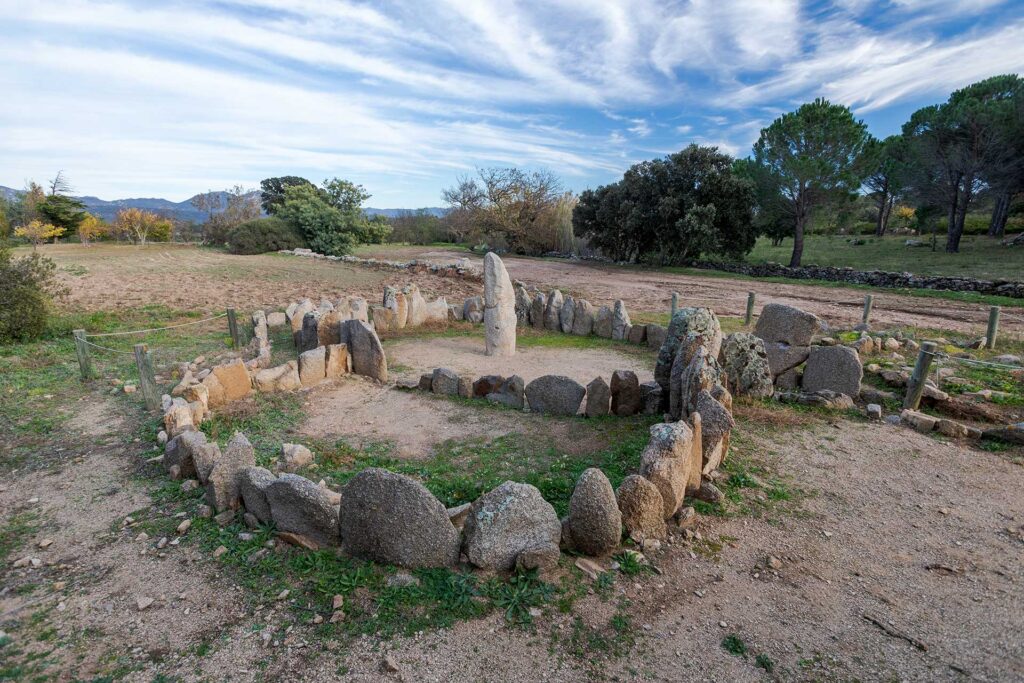
This is a monumental complex, made up of menhirs and five circular tombs from the late Bronze Age, as well as an access passageway. The complex is about 16 metres long and 12 metres wide, and includes two superimposed rectangular enclosures. The menhirs are placed in the subsoil and the majority are made of granite. The site was discovered in 1986 by members of the Empordà Group for the Safeguarding and Study of Rural and Traditional Architecture (GESEART in its Catalan initials) and has been the subject of several excavation campaigns. Their interventions made it possible to document a pole hole perfectly excavated in the rock and, in the southern part of the monumental complex, several pole holes thought to be possible wooden struts belonging to some sort of complementary structure of the first megalithic enclosure. There were three bronze arrowheads and a small iron knife, along with small charred human bones and ceramic remains. The site dates back to between the Late Neolithic-Chalcolithic and Late Bronze Age.
The Mas Baleta cromlech is one of the most outstanding examples in Catalonia of this type of megalithic construction. The photograph is of an arrowhead found in excavations led by archaeologist Josep Tarrús. It is made of bronze and belongs to tomb number 3 of the site. It is an element that explains the ritual function these megalithic monuments had, the burial of certain important tribe members.
The photo comes from the Josep Tarrús Collection, excavation of the Mas Baleta III site, 2006
Location
-
Camí De Capmany A Cantallops 9, 17709 La Junquera, Provincia de Gerona, España


Add a review